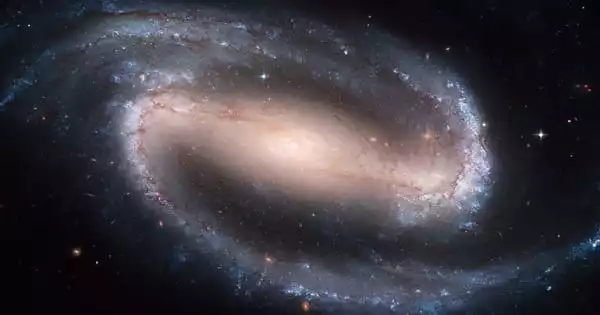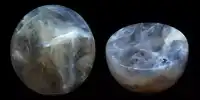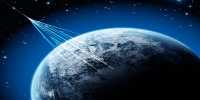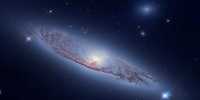Astronomers are one step closer to understanding the features of dark matter engulfing our Milky Way galaxy, due to a new map of twelve streams of stars rotating within our galactic halo. Understanding these star streams is critical for astronomers. They not only disclose the dark matter that keeps the stars in their orbits, but they also reveal the Milky Way’s creation history, demonstrating that the Milky Way has continuously grown over billions of years by shredding and consuming smaller stellar systems.
“We can see these streams being disrupted by the Milky Way’s gravitational pull and eventually merging with it. This research provides a glimpse into the Milky Way’s eating patterns, such as the kind of smaller star systems it ‘eats.’ Our galaxy is getting fatter as it gets older” Ting Li, a professor at the University of Toronto, is the paper’s lead author.
Prof. Li and her worldwide team of partners launched the Southern Stellar Stream Spectroscopic Survey (S5) to measure the properties of stellar streams, which are the shredded remains of adjacent tiny galaxies and star clusters being torn apart by our own Milky Way.
Li and her colleagues are the first to analyze such a diverse assortment of stellar streams, measuring star speeds with the Anglo-Australian Telescope (AAT), a 4-meter optical telescope in Australia. Li and her colleagues used the Doppler shift of light – the same phenomenon used by radar guns to detect speeding automobiles – to determine the speed of individual stars.
We can see these streams being disrupted by the Milky Way’s gravitational pull and eventually merging with it. This research provides a glimpse into the Milky Way’s eating patterns, such as the kind of smaller star systems it ‘eats.’ Our galaxy is getting fatter as it gets older.
Professor Ting Li
Unlike prior research that concentrated on a single stream at a time, “S5 is dedicated to measuring as many streams as possible, which we can do extremely effectively with the AAT’s unique capabilities,” says co-author Professor Daniel Zucker of Macquarie University.
The features of star streams suggest the presence of the Milky Way’s invisible dark matter. “Think of a Christmas tree,” adds University of Sydney co-author Professor Geraint F. Lewis. “On a dark night, we can see the Christmas lights but not the tree around which they are wrapped. The shape of the lights, on the other hand, reveals the shape of the tree “He stated. “The same is true for star streams; their orbits disclose the dark matter.”
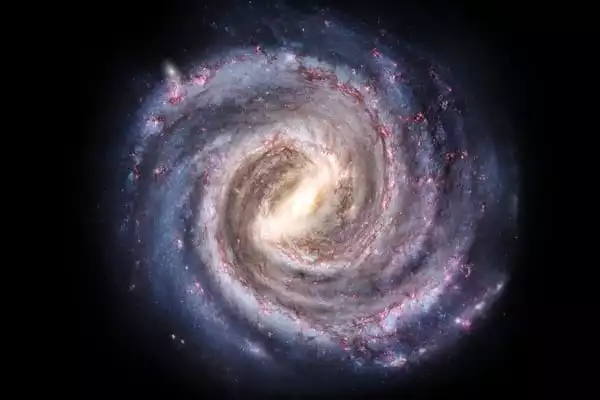
Astronomers may use these data to work out the chemical compositions of the stars, which tells us where they were created, in addition to gauging their speeds. “Stellar streams can arise from either disruptive galaxies or star clusters,” explains University of Chicago Professor Alex Ji, a co-author on the study. “These two sorts of streams offer differing perspectives on the nature of dark matter.”
These new findings, according to Prof. Li, are critical in identifying how our Milky Way formed from the featureless cosmos that existed after the Big Bang. “This is one of the most fascinating questions for me, a question concerning our ultimate origins,” Li added. “This is why we launched S5 and formed a worldwide collaboration to address it.”
Observations from the European Gaia space project were critical to S5’s success. “Gaia offered us with excellent measurements of star locations and motions, which were critical for identifying members of the stellar streams,” explains Dr. Sergey Koposov, co-author of the work and reader in observational astronomy at the University of Edinburgh.
Li’s team intends to collect additional data on star streams in the Milky Way. Meanwhile, she is satisfied with the results as a starting point. “There will be a lot more focused studies looking into stellar streams over the next decade,” Li predicts. “On this trip, we are trailblazers and pathfinders. It’s going to be a lot of fun!”
The movements of galaxies provide the most evidence for dark matter. Dark matter explains why stars far from the centers of rotating galaxies have far higher velocities than indicated by the visible matter distribution alone. The galaxies would collide if there was no additional matter exerting gravitational pull. To explain the “excess velocity” of stars, physicists believe dark matter forms a spherical halo around galaxies. Evidence for dark matter can also be found in galaxy clusters, which require significantly more matter than what is visible to generate the gravitational forces that keep the clusters together. Gravitational lensing also detects the presence of dark matter.
